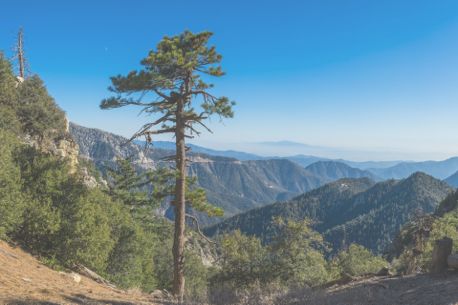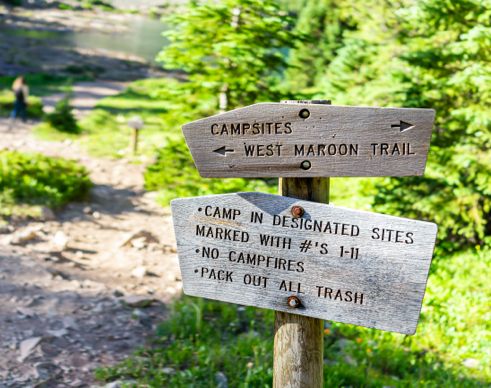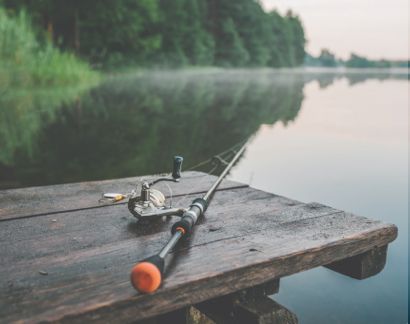Los Padres National Forest spans almost 2 million acres along California’s central coast, offering diverse landscapes ranging from rugged mountains to pristine beaches. The forest is a year-round haven for outdoor enthusiasts, featuring RV-friendly campgrounds, scenic hiking trails, and plenty of recreational activities.
RV camping in Los Padres National Forest offers a unique opportunity to explore its beauty, with well-maintained campgrounds that provide access to hiking, fishing, and other activities. Nearby towns like Santa Barbara and Ojai offer RV rental via RVShare.
Camping in Los Padres National Forest
Los Padres National Forest offers a variety of RV-friendly campgrounds, from paid options to sites with access to scenic trails. BLM camps provide additional options for budget-friendly camping near Los Padres National Forest. You can also locate dump stations near Los Padres National Forest.
Paid Campgrounds in Los Padres National Forest
Private Campgrounds Near Los Padres National Forest
For additional camping options, explore these top Campgrounds in California to enhance your RV adventure.
Budget-Friendly Campgrounds
Campgrounds by Lakes/Rivers for Fishing and Water Activities
Arroyo Seco Campground
$35–$40 per night for single campsites; $60–$70 per night for double campsites, with extra vehicles $10 each; group sites $150 per night for up to 50 people and 10 vehicles.
Plaskett Creek Campground
$45 per night (2 vehicles allowed per site), $10 per extra vehicle
Escondido Campground
30.00 per night, $10.00 per extra vehicle per night

Los Padres National Forest Hiking Trails
Los Padres National Forest offers a mix of trails, ranging from easy nature walks to challenging hikes, many of which are accessible near campgrounds.
Easy Trails for Beginners
Challenging Trails
Lakeside Trails

-
Jesusita Trail
Start your hike at the Cater Water Filtration Plant off of San Roque Road. Dip down into the canyon before starting the gentle uphill slope. Hike under the sycamore trees and splash in Jesusita Creek as you cross it a couple of times. Then, follow the trail through the oak forest and open meadows to reach Moreno Ranch. Wind your way through a series of switchbacks until you get to Inspiration Point.
Length: 6.7 miles
Intensity: Moderate
-
Rattlesnake Canyon
Park along the 1900 block of Las Canoas Road in North Santa Barbara to begin this hike through Rattlesnake Canyon. Cross the creek, and climb up the hills and back down again until you reach Lunch Rock. This large, flat rock in the middle of the stream is a fantastic place to watch for purple hummingbirds. Then, continue to Tin Can Meadow, named for the historic farmstead located there in the early 1900s. Finally, continue on the trail, and you will exit at Gibraltar Road after enjoying stunning coastal views.
Length: 2.5 miles
Intensity: Moderate
-
Tunnel Trail
The Tunnel Trail is almost a loop trail, which starts at the end of Santa Barbara’s Tunnel Road. Follow the path as you climb to the top of La Cumbre Peak. Then, explore the old homestead area as the trail meanders its way back to the Santa Barbara Botanical Gardens.
Length: 8.5 miles
Intensity: Moderate
-
Romero Canyon Trail
Start this trail by an old locked gate on Romero Canyon Road near its intersection with Bella Vista Drive. Follow the creek bed until you start hiking through the chaparral. Then, continue following the ascent until you reach the end of the canyon. Once you get to the Camino Cielo ridgeline, walk northwest about 1.5 miles, and you will find a dirt road heading back down the canyon.
Length: 6 miles
Intensity: Moderate
-
Red Rock Trail
Start this trail at the river in the Lower Santa Ynez Recreation Area. Follow the path along the creek and pass several swimming holes. At its end, you can walk slightly uphill and take the higher elevation road back to the starting point. This loop trail offers stunning ocean views.
Length: 7 miles
Intensity: Moderate
Activities in Los Padres National Forest
Whether you’re a hiker, camper, or nature enthusiast, there’s something for everyone in Los Padres National Forest. Here are some popular activities to enjoy:
Fishing:Los Padres National Forest offers anglers a mix of freshwater and saltwater fishing opportunities. Explore river and stream fishing spots like Matilija Creek, Arroyo Seco, and Santa Ynez River, or cast your line along the scenic coast at Sand Dollar Beach and Willow Creek Beach.
Water Activities:Swim at Red Rock Recreation Area, where scenic trails lead to large pools like the popular Red Rock Pools, or explore Arroyo Seco Gorge for crystal-clear swimming holes along narrow rock walls. Pfeiffer Beach in Big Sur is known for its striking Keyhole Rock and unique purple sand, while Sand Dollar Beach provides a peaceful spot for beachcombing and relaxation.
Hiking: Los Padres National Forest boasts over 1,200 miles of hiking trails , ranging from easy walks to challenging backcountry routes. Explore trails like Arroyo Seco Trailhead for scenic views and swimming holes . Perfect for all skill levels, the forest offers diverse hiking experiences.
Los Padres National Forest offers exceptional wildlife viewing opportunities across its diverse ecosystems, from semi-desert interiors to coastal redwood forests. Visitors may spot species like mule deer, black bears, and even the majestic California condor, reintroduced into the wild through the Forest's condor sanctuaries.
Los Padres National Forest offers exceptional horseback riding and camping experiences with facilities like pipe corrals, spacious parking for trailers, and access to scenic trails. Key locations include Upper Oso Campground, a gateway to the Santa Cruz Trail, and Piedra Blanca Trailhead with shaded campsites.
OHV Trail Riding
Enjoy thrilling OHV experiences at Los Padres National Forest with areas like Pozo-La Panza, offering 44.5 miles of trails, and Rockfront OHV Area’s challenging terrain . Popular spots include Ballinger Canyon, and Divide Peak, with staging and camping options at Navajo Flat and Turkey Flat.

-
Identifying Flora and Fauna

There are many different types of flora and fauna in the Los Padres National Forest. Most of the forest consists of coastal mountain areas. The forest is home to 19 reservoirs and 10 wilderness areas. Plants across the forest vary dramatically based on rainfall, with the coastal regions getting a lot more rain than interior areas. At least five rare species from the Manzanita genus grow in the chaparral areas of this forest. On many north-facing slopes, you will find pinyon-juniper woodlands filled with nut trees. In addition to great places to pick nuts, these areas serve as homes to many animals. The northern edge of the forest is home to redwood trees, although they are not as tall as their northern counterparts. They are, however, still the tallest tree in Los Padres National Forest. You will find conifer forest throughout the area, especially in the northward-sloping drainage area. The grassland areas are great places to see wildflowers in the spring.
-
Fishing

If you love to go steelhead trout fishing, then you must visit the streams in Los Padres National Forest. It is possible that all the species of steelhead trout in northern areas got their start in the place south of the Santa Maria River in this forest. Waters remain cool enough in most areas of this forest that trout love to come here to spawn and use the deep pools as their summer home. You can also go saltwater fishing at the Sand Beach Day Use Area, the Southern section of the Big Sur coastline.
-
Geocaching

Traditional geocaches have been hidden in the Wind Caves area of the Los Padres National Forest. Many of the geocaches in this area, like Bustin’ Out, requires some rock scrambling to get to it, although no technical climbing equipment is needed. Even if you do not find the cache, this is a fun area to explore with many caves. One of the caves is large enough that early settlers could have hidden wagons in it.
-
Nature and Bird Watching

There are many fabulous places to go birdwatching and nature viewing in the Los Padres National Forest. Consider visiting the Sisquoc Condor Sanctuary, but be sure to stay on the 0.25-mile paths. Officials established this area so that California condors, which were once extinct in the wild, would have a place to be released by the Los Angeles Zoo and the San Diego Wild Animal Park. Take precautions so that you do not drop any food because it can hurt the chances for these birds, which now number over 300 in the wild, to survive.
-
Stargazing

There are fantastic stargazing opportunities in Los Padres National Forest, especially near Mount Pinon. The parking lot at the Chuchupate Ranger Station is a great place to watch the stars at night, but there are great roadside pullouts in this area. Another great option is the Lockwood Valley, between Lake of the Woods and Ojai. The Reyes Creek Campground is a fantastic campground to stay at while stargazing.
How to get to Los Padres National Forest
Address: Wheeler Gorge Visitor Center, 17017 Maricopa Highway, Ojai, California 93023
Fee: Entry fee $0
By Car
From Los Angeles, CA : Los Padres National Forest is approximately 88 miles from Los Angeles via US-101 N and CA-33 N, making it a convenient 1.5-hour drive under usual traffic conditions.
From San Francisco, CA: Los Padres National Forest is about 153 miles from San Francisco via US-101 S, with a drive time of approximately 2 hours and 20 minutes under normal traffic conditions.
From Santa Barbara, CA: Reach Los Padres National Forest in just 28 minutes from Santa Barbara by taking the fastest route via CA-154 W/San Marcos Pass Rd, covering a distance of 20.7 miles.
By Air
Santa Barbara Airport (SBA): Located 20 miles from the southern entrance, this is the closest major airport to Los Padres National Forest.
Monterey Regional Airport (MRY): About 60 miles from Los Padres National Forest, this airport provides convenient access to the northern areas of the forest.
Seasonal Restrictions
Some roads and campgrounds may close during winter or after heavy rain. Always check the forest’s official website for updates before planning your trip. Fire restrictions may apply in summer, so verify campfire and BBQ permissions in advance.
Fees and Permits
General access to the forest is free, but camp fees vary by campground. Permits are required for campfires, wood collection, and certain recreational activities. Obtain permits at local ranger stations or recreation.gov.
Frequently Asked Questions About Los Padres National Forest
What is the best time to visit Los Padres National Forest?
Spring and fall are the best times to visit Los Padres National Forest. You'll miss the summer crowds, but the weather will still be pleasant for outdoor exploring.
How many hiking trails does Los Padres National Forest have?
Los Padres National Forest has nearly 200 hiking trails. Hikers can explore a variety of terrains and trails along the Central Coast, in the largest national forest in California.
What is the closest town to Los Padres National Forest?
Solvang is one of the closest towns to Los Padres National Forest. Ojai and Los Olivos are two other nearby towns with plenty of shopping and fun activities in the area.
What type of wildlife lives in Los Padres National Forest?
Wildlife in Los Padres National Forest includes mule deer, black bear, wild boar, and pronghorn antelope. There is also a variety of birds and small mammals in the area.
Is there a fee to get into Los Padres National Forest?
There is not a fee to get into Los Padres National Forest. However, permits are required to park in certain areas of the forest for picnicking, hiking, and other activities.







